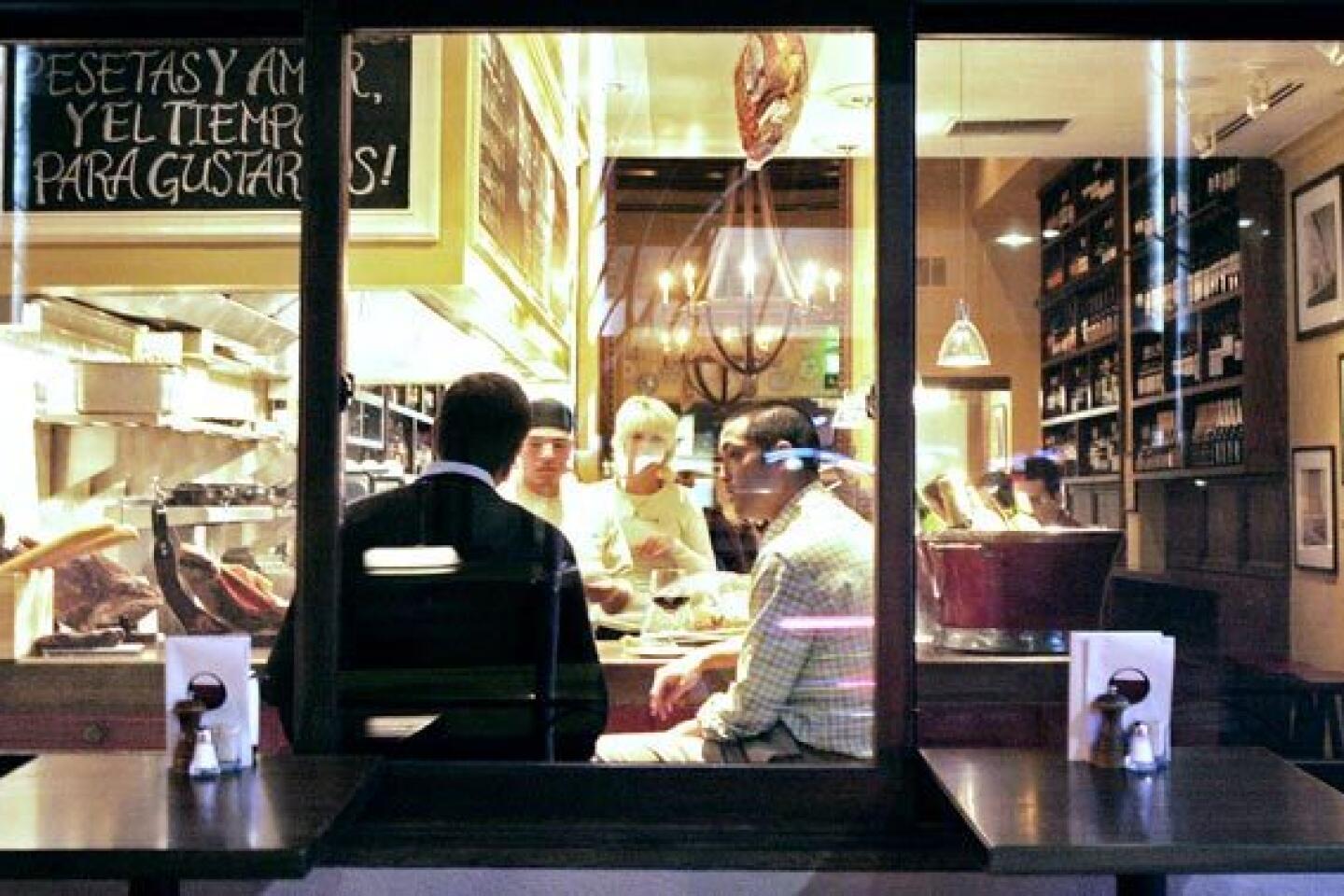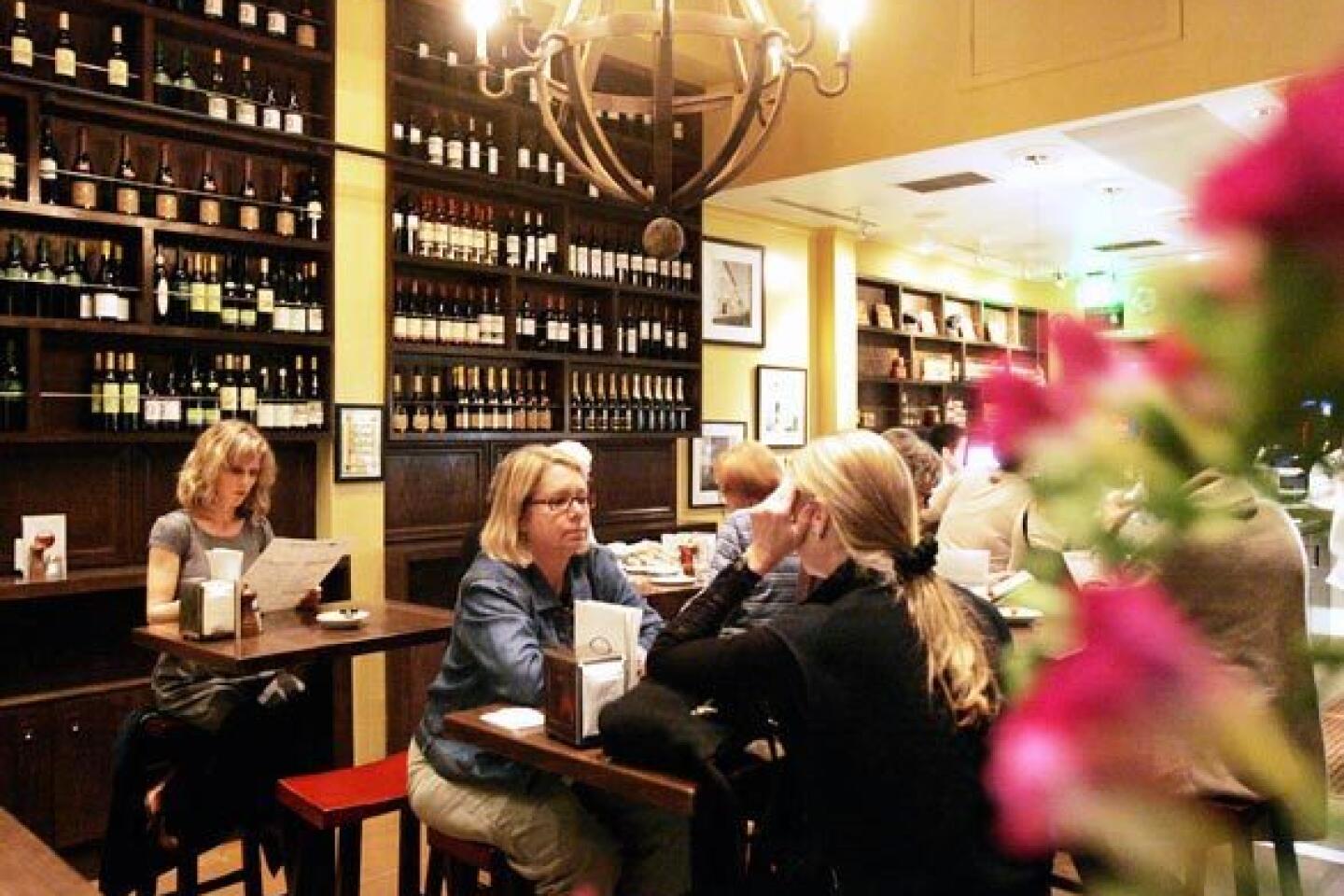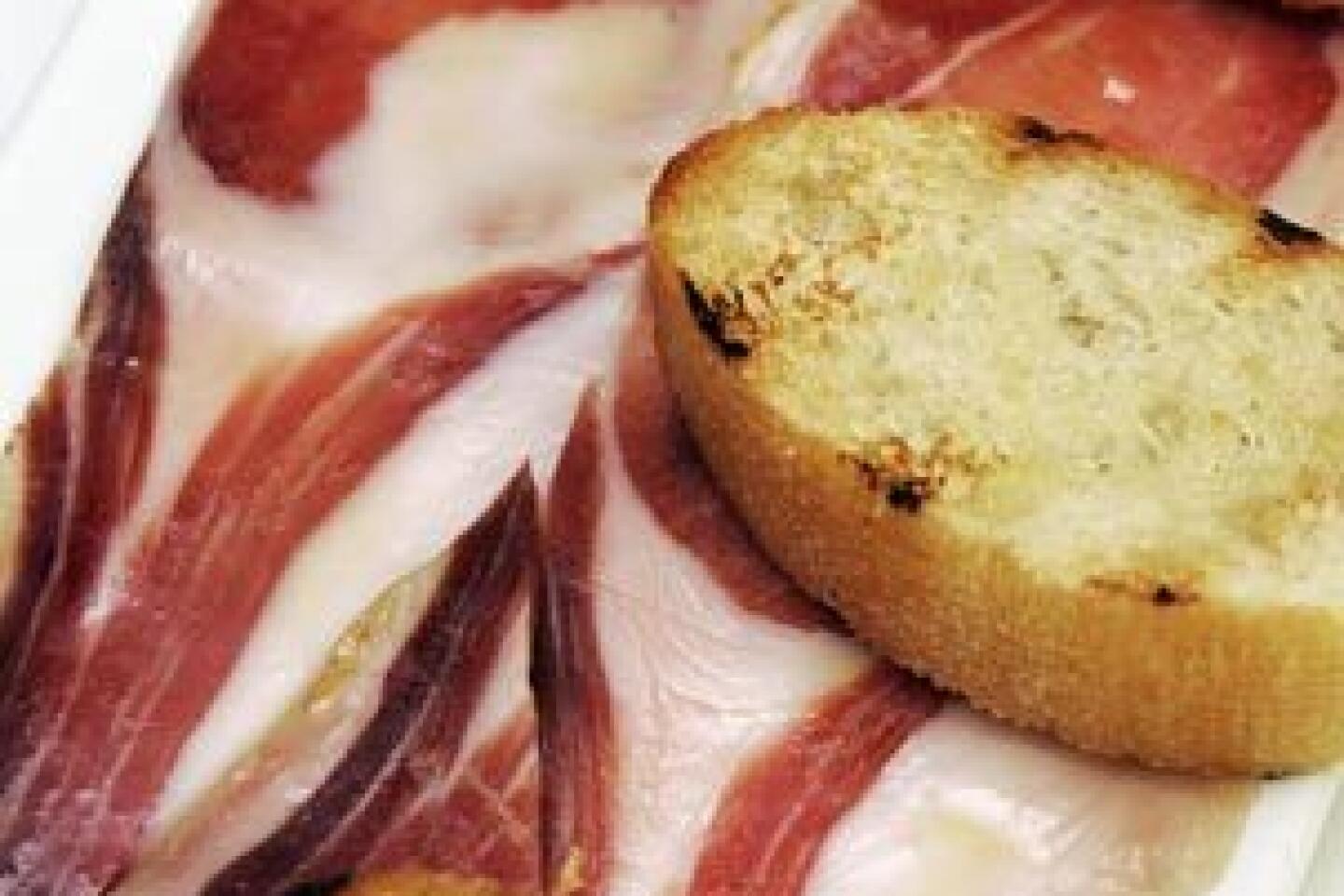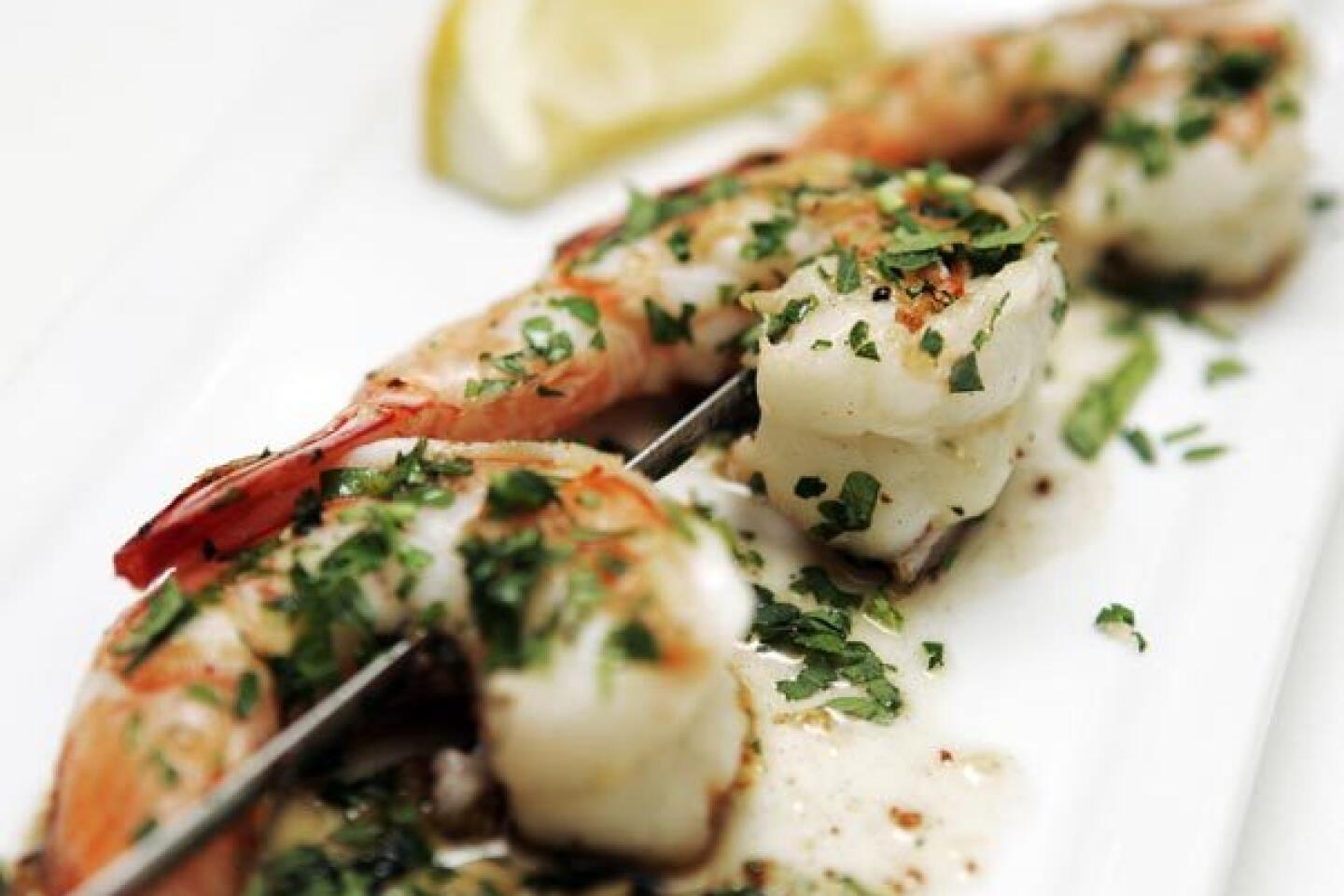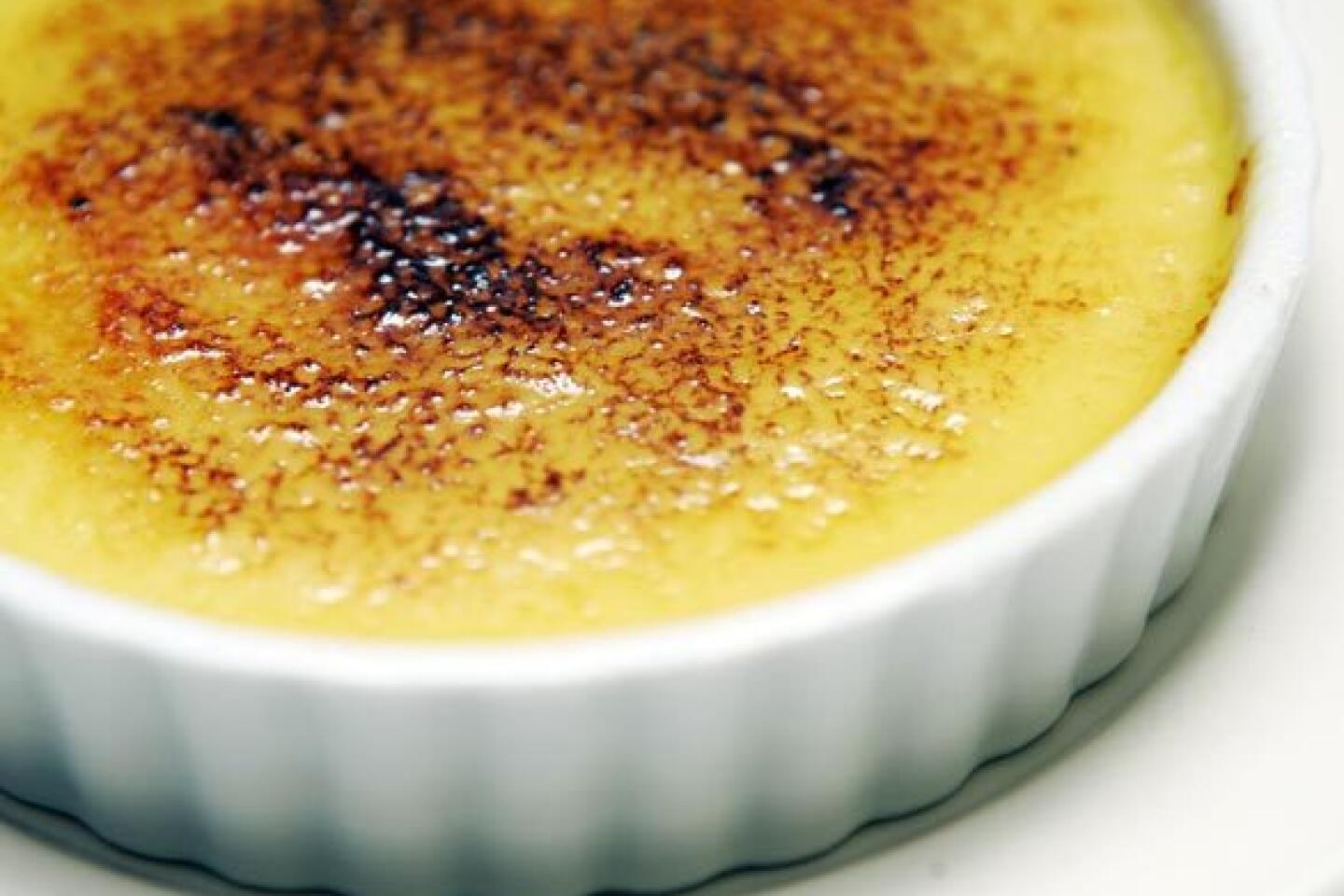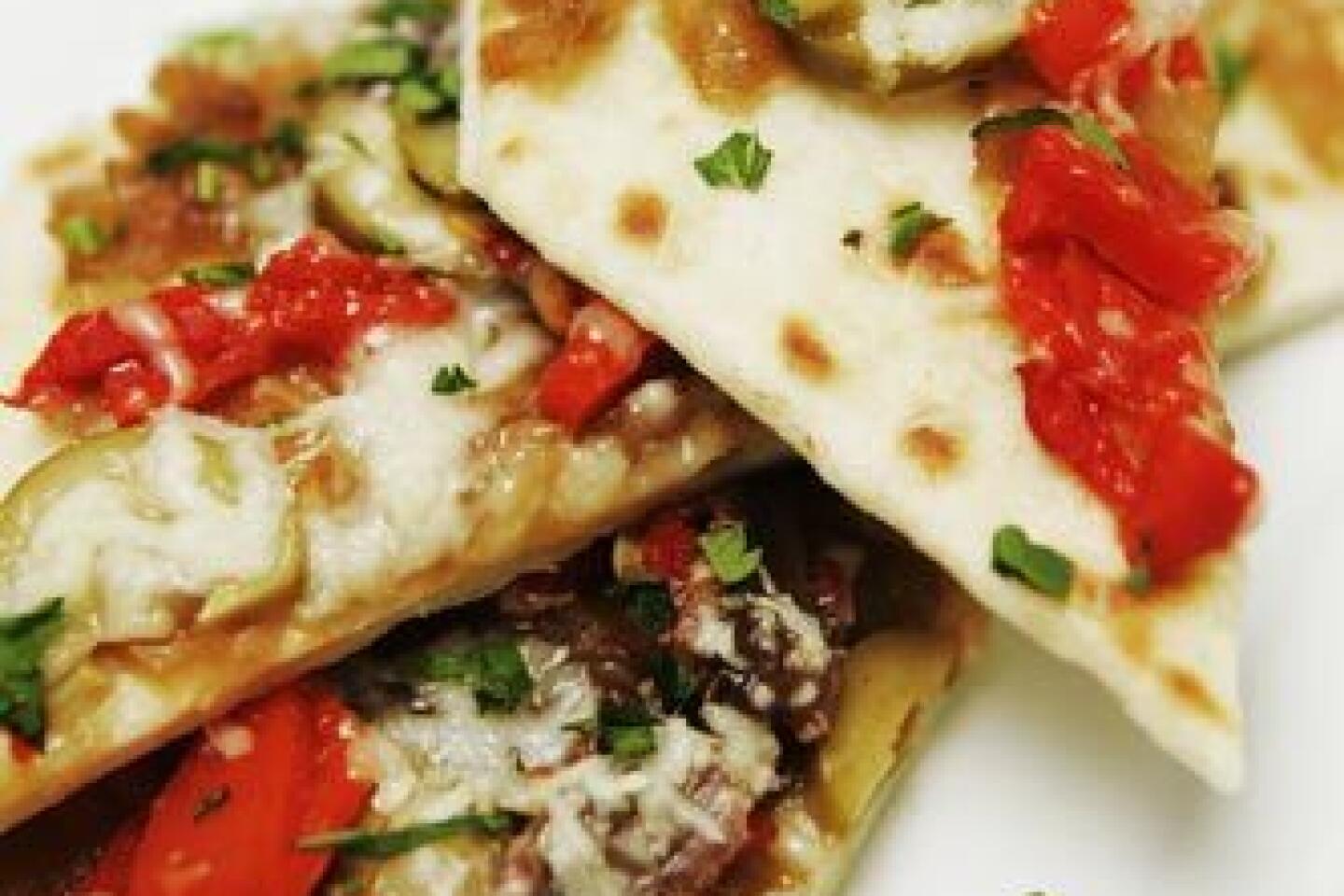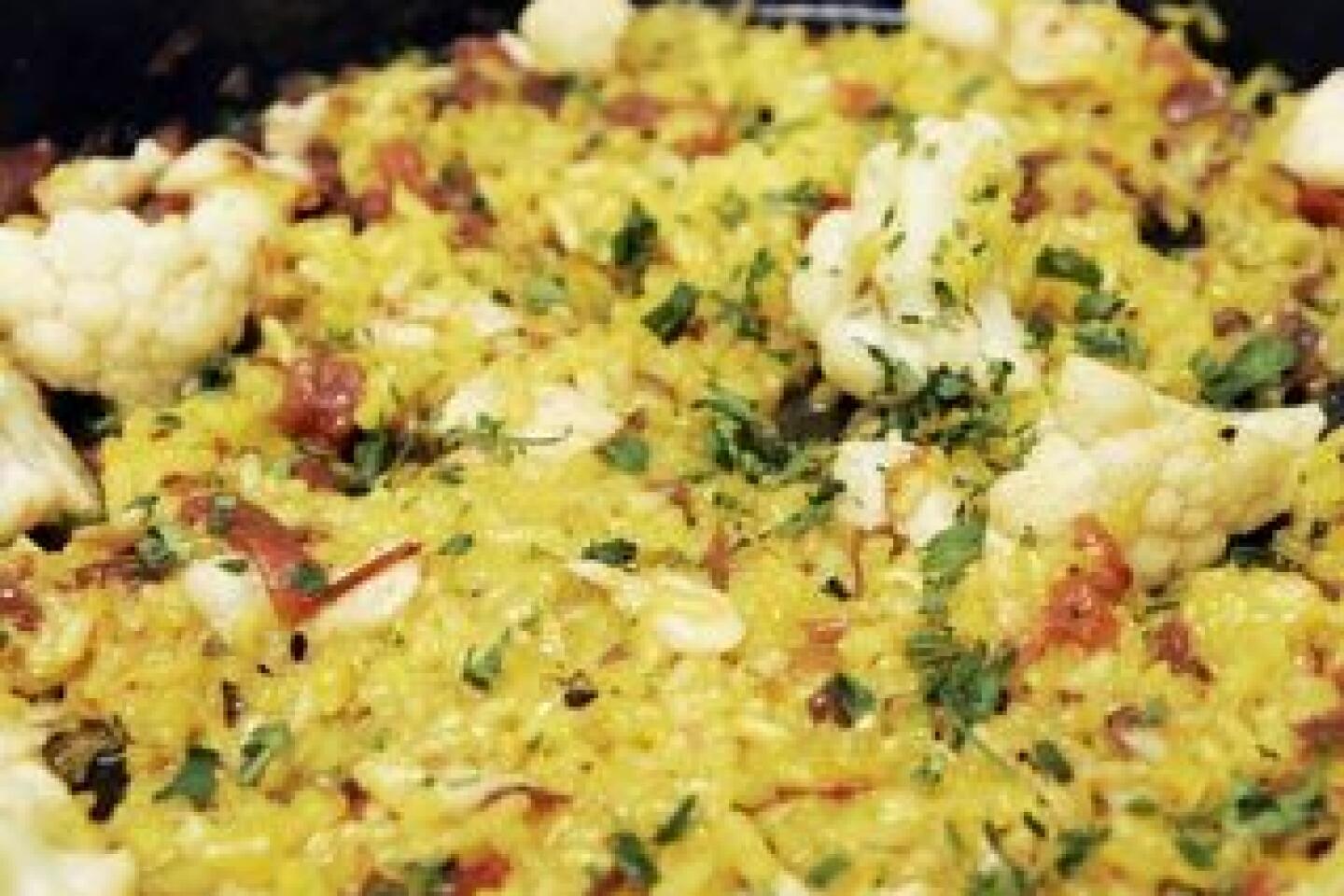Bar Pintxo: Near the beach, a bit of Spain
Tell me, what food-loving traveler can visit San Sebastian in the Spanish Basque country and not fall head over heels for pintxos (pronounced “peenchos”), the local version of tapas? It happened to me. It’s happened to countless other foodies discovering Basque cuisine for the first time. And it happened to Joe Miller, chef-owner of Joe’s Restaurant in Venice and now of Bar Pintxo in Santa Monica too.
Slip into one of the more than 50 tapas bars lining the twisting, narrow streets of San Sebastian’s old town, order a glass of Txakolina wine, try one or more of the house specialties and then move on to the next bar for its specialties. When it gets too crowded at the bar, people move out into the street, leaning against the building, setting their glasses on a ledge, calling out to friends and meeting new ones. I highly recommend it.
Struck by the tradition there and elsewhere in Spain, Miller wanted to bring that experience home to Southern California. Looking for something modest and small enough for a real tapas bar, he turned up a long, skinny storefront on Santa Monica Boulevard, a couple of doors up from Ocean Avenue in Santa Monica. Bar Pintxo opened in December, with just 30 seats, a handful at the bar and the rest at little tables in the back.
Over the years, a number of local chefs have attempted some form of tapas. Hollywood’s Meson G (where Red Pearl Kitchen is now) took a dive on the concept. And Bodega de Cordova in L.A. closed recently too. One was too ambitious, the other perhaps too limited. Tapas is basically grazing, right? So you’d think it would fit right in with our laid-back lifestyles. Yet, from the way the servers at Bar Pintxo feel the need to explain the idea -- and from the letters I’ve received from puzzled or infuriated readers who have been to Bar Pintxo -- something is not getting across. That may be because most other tapas places have interpreted the idea to mean small plates.
So remember, No. 1: You go for tapas before or after dinner. You go to have a glass of wine or sangria and a bite or two with friends. At most, it’s a light meal.
No. 2: Tapas are more or less single portions. Platos (plates) are slightly bigger, better for sharing.
No. 3: You drink Spanish wines. At Bar Pintxo, you’re happy to do it, thrilled, in fact, because Chris Keller, the wine guy for Joe’s Restaurant, has put together a smashing list -- and not all that small -- herding together whites from not only the Basque country, but from Penedes, Priorat, Rias Baixas, Rueda and Rioja. Half a dozen cavas are on offer by the glass. And he has a wonderful selection of the exciting reds that Rioja, Ribera del Duero, Priorat, Toro and other Spanish regions are producing, some in half bottles.
Because a tapas bar is meant for quick bites, comfort is not an issue, and at Bar Pintxo there are a handful of seats at the L-shaped bar that fronts the kitchen on two sides, and at the back, six or so teensy high tables with stools under an old iron chandelier. On the walls, bottles of Spanish wine stand shoulder to shoulder across the shelves. A small ledge runs along one wall too, where you set your wineglass while waiting for a table to be free. (Bar Pintxo takes no reservations.) The glasses are more like tumblers, though you can request stemware. The close quarters make it fun, almost as if you’re sitting at one big communal table.
You could go a few ways here. But why not start with a glass of Vina Tondonia rosada or a ruby Ribera del Duero and an order of jamon iberico, the phenomenal Spanish ham that’s just made its way into this country at long last. Hand-cut, the raw-cured ham is a deep mahogany brown, unctuous and fabulously complex with a finish like a wine in that it goes on and on. Order it straight, with some toasted bread. And ask for it to be cut a hair thinner than usual. It’s $18 a plate, as opposed to $9 for the regular jamon, but it’s also more than twice as good. I could be happy ordering this, just this, every time I go to Bar Pintxo.
On a recent night, the kitchen was also serving a special listed as “iberico bellota,” (better described as bellota paleta, cured shoulder of bellota pig), a dish our waiter described as a sort of salad with spinach in a sherry vinaigrette and the ham. Well, it was more like a small plate of jamon topped with a few heirloom spinach leaves strewn with crispy shallots. It’s good, but the dressing interferes with the ham. To be fully appreciated, the ham has to come entirely on its own.
On the other hand, if you’re feeling like a white wine, start with a Txakolina and order the classic gambas al ajillo, three shrimp sauteed in olive oil and garlic with lemon squeezed over at the last minute. The garlic is caramelized, the shrimp sweet and delicious -- and very lemony. You’ll have to ask for bread to sop up the sauce: It’s not automatically served here. (The baguette is probably not the best choice for this rustic Spanish food. It’s too soft and refined.)
Another option, or for a bite to follow, is to try a tapa of bacalao, flakes of dried salt cod and potato heaped on an inch-thick slice of baguette, so it looks like a giant piece of sushi.
And this is where I have trouble grasping Miller’s take on tapas. His seem oversized compared with Spanish versions. It’s as if he wants to pile enough stuff on top that he can charge $4 or $5 each. (He’s got serious overhead, more probably than a typical tapas bar in Spain has to float. And it’s these real tapas -- pieces of bread topped with chorizo, tuna salad or tomato -- that are the least satisfying items on the menu, oddly enough, though I do like the simple and classic grilled bread rubbed with fresh tomato and topped with serrano ham.
Other traditional bites include chicken and ham croquettes with a molten heart of bechamel served with a pale mayonnaise and dates wrapped in bacon and stuffed with Cabrales, a blue cheese from Asturias.
Most of my favorites, though, have been on the platos (plates) side of the menu or a special. Coca, Catalonia’s answer to pizza, has a different topping every night. I’ve tried a few and liked the one lavished with Manchego cheese, piquillo peppers and green olives the best. The crust is crunchy and slicked with olive oil. And it is easily shareable by two or three.
The paella changes every night too. But after I sat at the counter and saw how it’s cooked, I realized why it’s wetter and creamier than a real paella would ever be. Partially cooked saffron rice is added to the pan of sizzling ingredients and then stirred and cooked until done, so it comes out halfway between paella and risotto. Sometimes it develops a tasty crust on the bottom, but most times not. I wonder why Miller doesn’t make one big paella a night, and serve it out. And when it’s gone, it’s gone.
I’m quite fond of the spinach a la Catalana, which is the way they do it in Barcelona, sauteed with sultana raisins and pine nuts, in olive oil, of course, and the wedges of tortilla espanola -- caramelized onions and potatoes cooked with egg to make an inch-tall tortilla. Both are earthy and comforting.
Not quite a replica
Crowded together at little tables, or sitting at the bar, eating and drinking at Bar Pintxo is convivial and fun, easily the closest thing the Westside has to a true tapas bar. It’s still very much a work in progress, though, as Miller gauges his California audience. Old Spanish hands may be disappointed that it isn’t an exact replica of their tapas bar in Seville or Madrid, but if you order judiciously, you should enjoy Bar Pintxo. I appreciate the brio of this modest tapas bar and the way Miller, after years of cooking California French at Joe’s Restaurant, found something in Spain that excited him enough to want to emulate it here. So, instead of a clone of his Venice restaurant, we have something entirely new from this hard-working chef.
Come summer, when you can sit outside at a couple of sidewalk tables, or walk over for a bite after a walk on the beach or Palisades Park, Bar Pintxo is going to come into its own. Those minerally whites from Galicia or the Basque country are perfect summer drinking. And what better impromptu summer noshing than tapas? Especially at the beach.
--
Rating: *1/2
Location: 109 Santa Monica Blvd., Santa Monica; (310) 458-2012
Ambience: Small, cozy tapas bar with seats at the bar or at small tables in back from Joe Miller of Joe’s Restaurant in Venice. Great casual spot for a glass of wine and a couple of tapas with friends on a whim (no reservations). The beach-adjacent location is a plus.
Service: Attentive and helpful.
Price: Tapas, $3 to $8; platos (bigger plates), $2 to $9; desserts, $5 to $6.
Best dishes: Coca Pintxo, jamon iberico, gambas al ajillo, bacalao tapa, Catalan-style spinach, tortilla, sopa de ajo castellano (garlic soup), manzanilla olives with orange, crema Catalana.
Wine list: Inspiring all-Spanish selection, with two dozen wines by the glass. Corkage fee, $20.
Best table: A seat at the bar.
Details: Open from noon to midnight daily. Wine and beer. Street and lot parking nearby, or valet parking (not validated) around the corner on Ocean Avenue, $9.
Rating is based on food, service and ambience, with price taken into account in relation to quality. ****: Outstanding on every level. ***: Excellent. **: Very good. *: Good. No star: Poor to satisfactory.
More to Read
Eat your way across L.A.
Get our weekly Tasting Notes newsletter for reviews, news and more.
You may occasionally receive promotional content from the Los Angeles Times.
